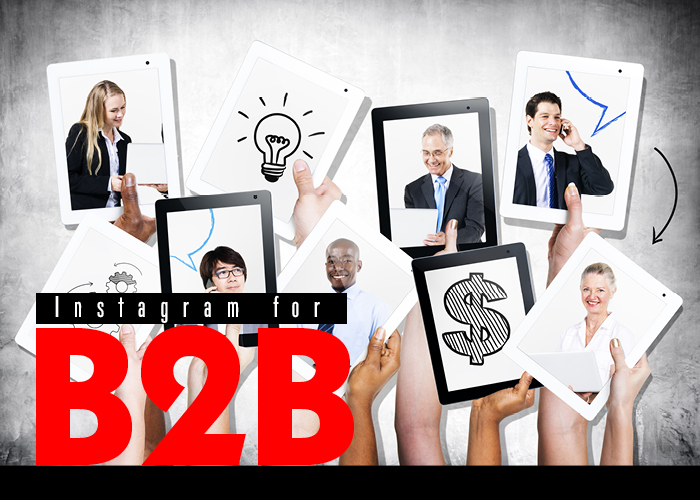
Instagram for B2B
May 24, 2016
Slotting Fees – The Expensive Battle for Shelf Space
June 7, 2016My Intro to Buyers Personas


I hear the term “marketing” all the time. As a business, you don’t always step back and take a look at what kind of marketing your business is conducting. Many are accustomed to traditional marketing, often referred to as outbound marketing. Outbound marketing often involves buying ads, direct mailers, and phone calls in hope that your target audience will receive the message and respond. Lets face it- audiences are tuned out to most traditional marketing methods. As technology and information advances at a faster rate, we need to adapt as marketers, or in my case, as an intern.
As a marketing intern here at Custom Direct Inc., I am far from a “marketing expert” when it comes to new terminologies like “inbound marketing,” “buyer persona,” and “journey mapping”. Digging deeper into the subject and writing a full blog post– I learned I am in a very shallow end of a very deep ocean. How does a business utilize inbound marketing? After reading numerous articles, what I needed wasn’t going to be found in the same article copied over a million times by numerous “experts.”
I knew an initial step for implementing inbound marketing was creating the buyer’s persona. Luckily, I was saved just in time to learn more about this topic by listening in on a presentation to an industrial company. The presentation was focused on the very first steps in producing an Inbound Marketing Plan—Developing Buyer Personas.
In a room with a long wooden table filled with engineers and office professionals, I took my borrowed notepad and got to work. Buyer what? A Buyer’s Persona is a term used to create an “ideal” fictional representation of your best client. This is first conducted through numerous surveys, phone interviews, and market research. The amount of information gathered depends on how many individuals you are interviewing. Of course, the more people interviewed the more unbiased and diverse the information. Gathering the information, in my opinion, would be the hardest part of the persona. Getting 10-20 customers interviewed in a timely manner seems next to impossible for busy working professionals. After hearing it took our presenter 40 days to get 12 interviews, it seemed like a huge accomplishment for the busy industrial industry.
In this case, our team produced two different buyers personas. This is extremely important for businesses to understand. Not every customer is going to have the same values, needs, wants and lifestyle. The message your business is sending can’t be directed to only one type of audience. Your business needs to segment your audience in order to better help them. Segmenting your business persona depends on the research you gather. Your company could have more than one persona. CDI was able to identify two different personas during this presentation.
Now, the information you gather is core to the buyer’s persona. It’s relevant information about your current customer to better attract new customers. When conducting the interviews, the conversations may last a minimum of 20 minutes, longer depending on the subject’s personality type. It’s important to find out who these people are. Who are your next customers? For this situation they were even asked to describe their personal hero! The better you understand the customers you already have, the better you can analyze what prospective clients might want—or not want from your company.
Not sure what you might ask your customers? Here are a few example questions to ask your current customers, prospects, or referral:
- What is your job role? Your title?
- What is your typical day like?
- What is the desired content you want to see?
- What do you search for in your role?
- What publications or blogs do you read?
It’s necessary to adapt your list of questions relevant to your business. It’s also important to note demographics, backgrounds, goals, and challenges among the list of questions you develop. A powerful rule of thumb when interviewing is asking “why” and keep the number of questions around 20 so you have organized data, and are respectful of their time. A helpful tool is to use Survey Monkey; they provide helpful questionnaires to ask your audience along with online options for conducting your survey.
At CDI all interviews conducted were recorded with subjects approval. This helps translate the information to a paper format. Referencing quotes also helps make an impact on your persona. The more detailed your persona, the better the results! After you have gathered who, what, why, and how of your persona start writing down the gathered information. Here is an easy template example courtesy of Hubspot:




Use your buyer’s persona(s) to mold your new inbound approach. Creating your buyer’s persona will help you tailor your message, product development, services, and needs to multiple groups. The persona also tells you whom you shouldn’t be marketing to, known as the “exclusionary” persona. Your persona will showcase how you should be sending your messages to your audience.
A little over an hour later, I came back from the presentation and began looking over my notes. I am still not an expert in marketing, but hands-on experience is something you can’t learn from a blog post. At CDI I’ve been able to witness firsthand the making of your buyer’s persona– and as I’m typing this blog maybe someday I too, will present to a future intern.


